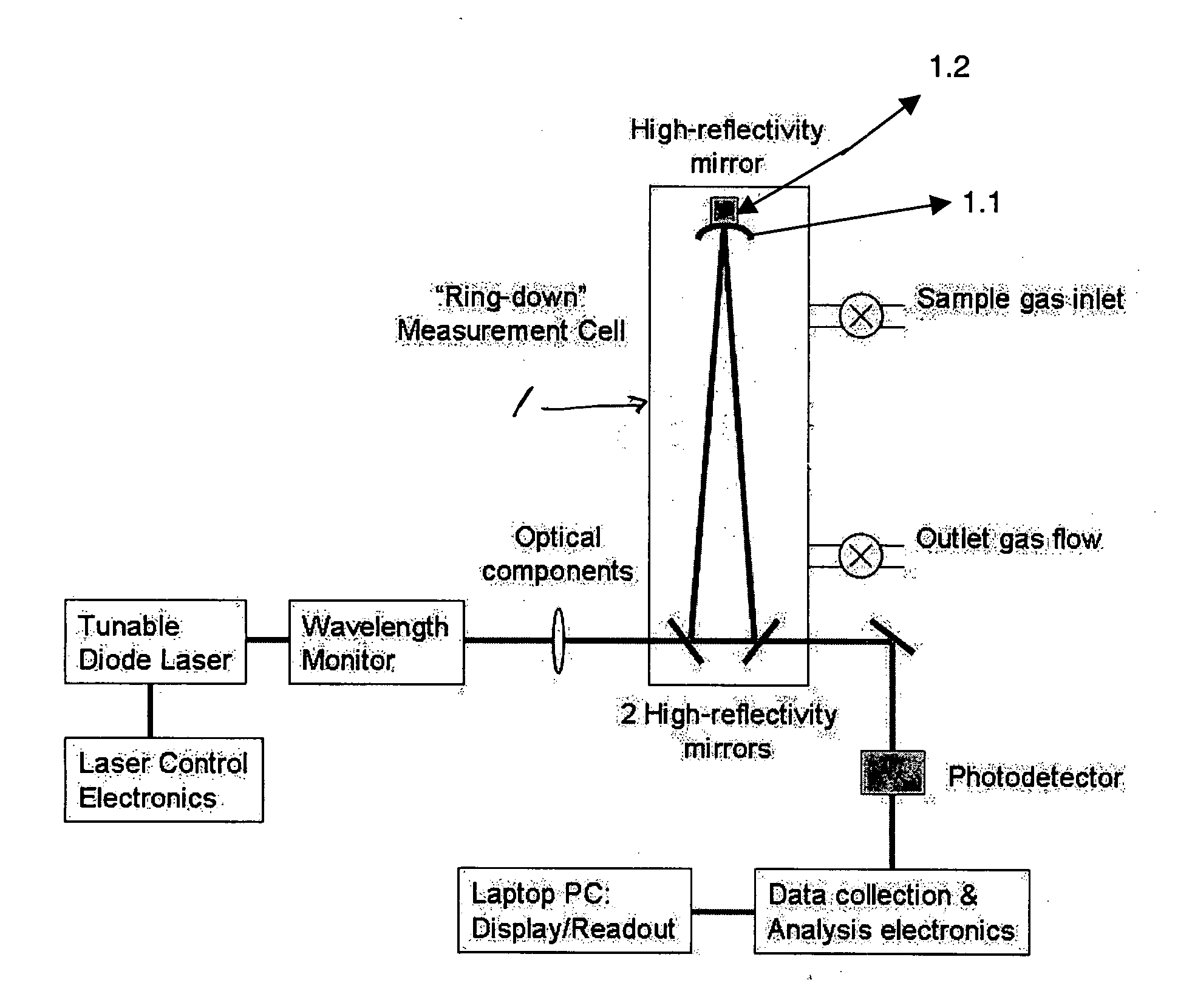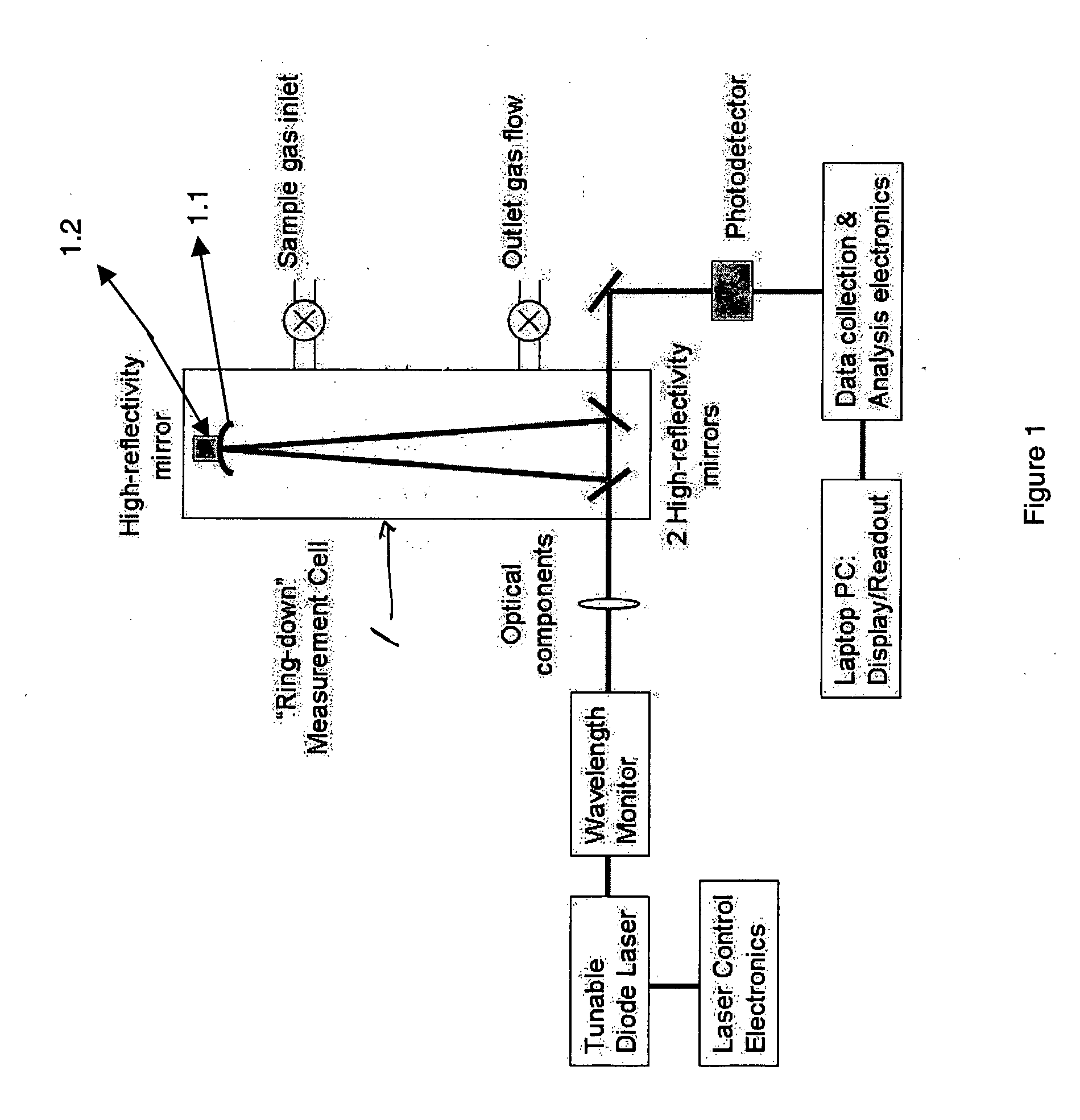Method for the precise measurement of the wavelength of light
a wavelength and wavelength technology, applied in the field of precise measurement of the wavelength of light, can solve the problems of insufficient selectivity in spectral measurement, limited resolution, and inability of ftir spectrometers to resolve individual rotational lines in an absorption band
- Summary
- Abstract
- Description
- Claims
- Application Information
AI Technical Summary
Problems solved by technology
Method used
Image
Examples
Embodiment Construction
[0027] As previously indicated, none of the above-mentioned prior art absorption spectroscopy methods can measure the wavelength very precisely or accurately, and all of the laser-based methods, including CRDS and CEAS, have a spectral resolution that is only as good as the wavelength monitor used to measure and control the laser output. It is the purpose of the present invention to provide a wavelength measurement method that substantially increases the wavelength resolution of a CRDS or CEAS system, without requiring the use of a high precision wavelength monitor.
[0028] Furthermore, the method described herein does not require tight wavelength control of the laser source itself. Suitable lasers for the practice of the current invention include Distributed Bragg Reflector Lasers, Optical Parametric Oscillators, Optical Parametric Generators, External Cavity Diode Lasers and Distributed Feedback Lasers. All these lasers are of types known to the skilled artworker. Depending on the ...
PUM
 Login to View More
Login to View More Abstract
Description
Claims
Application Information
 Login to View More
Login to View More - R&D
- Intellectual Property
- Life Sciences
- Materials
- Tech Scout
- Unparalleled Data Quality
- Higher Quality Content
- 60% Fewer Hallucinations
Browse by: Latest US Patents, China's latest patents, Technical Efficacy Thesaurus, Application Domain, Technology Topic, Popular Technical Reports.
© 2025 PatSnap. All rights reserved.Legal|Privacy policy|Modern Slavery Act Transparency Statement|Sitemap|About US| Contact US: help@patsnap.com



